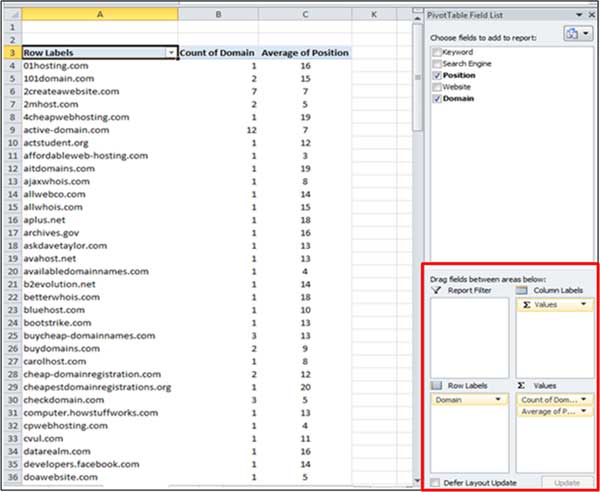4 Steps to Identifying Your True Organic Competitors
A sure-fire way to map out the competitive landscape for your industry.
A sure-fire way to map out the competitive landscape for your industry.
Whether you are a large international organization or a small village shop, if you are engaging in an SEO campaign, it is critical to understand your industry’s true organic landscape in order to:
The first question that should be coming to mind is: “Who are my true competitors?” Many large enterprises and their executives are often surprised to find that who they typically think of as a direct competitor may not always be the same set of competitors performing well in organic search for high volume keywords. This month I’m going to delve into the world of Excel Pivot tables and rely on hard numbers and data to identify a sure-fire way of mapping out the competitive landscape for your industry in four easy steps.
Step 1 – Conduct Keyword Research
A solid SEO campaign revolves around conducting keyword research to determine how your customers are searching and targeting the high volume, as well as low-hanging fruit phrases. In this example, we’re using 15 keywords around the domain name registration and web hosting industry – I hope that’s neutral enough for an example! However, the more in-depth your keyword list is, the more meaningful your end result data will be.
Step 2 – Collect Ranking Data
Most rank tracking software has the ability to provide reports that display which URLs are ranking in each position for a set of keywords. I ran my report on the 15 keywords in Google to a depth of 20 positions. Once exported, you’ll want to have a format that shows line by line the URL that’s ranking in the top 20 positions for each keyword. It should look similar to the screenshot below:

Once you have your data, add a column that isolates the top-level domain name of the ranking URLs as shown below:

Step 3 – Create the Pivot Table
To create the pivot table in Excel, simply select the entire set of data and go to Insert>Pivot Table and place it in its own worksheet. Once created:
Your pivot table should appear similar to the screenshot below:

Once your pivot table has been created, select all of its data, copy/paste it into a new worksheet, and sort the data by count of domain (largest to smallest):

Step 4 – Analyze the Data
Reviewing the data above, you can see that NetworkSolutions.com, Register.com, and GoDaddy.com are ranking most frequently for my set of 15 keywords and have a strong average position for those rankings. The data doesn’t stop there though! Get creative with your pivot tables by adding in additional metrics such as other search engines, categorize your keywords to see who the top competitors are for unique sets/topics of keywords, or even decrease the depth of rankings to only look at who is ranking in the top three positions for an understanding of who is controlling the top spots where you want to be.
Once you have your list of competitors, it’s time to start analyzing their content and SEO strategies for insights into why they are ranking, what they have that you don’t, and then determine how you can do it better in order to break into the top positions. More on this next time.
Finally, are you conducting competitive analyses within your organization? If so, what other ways are you identifying your true online competitors?
Crispin Sheridan